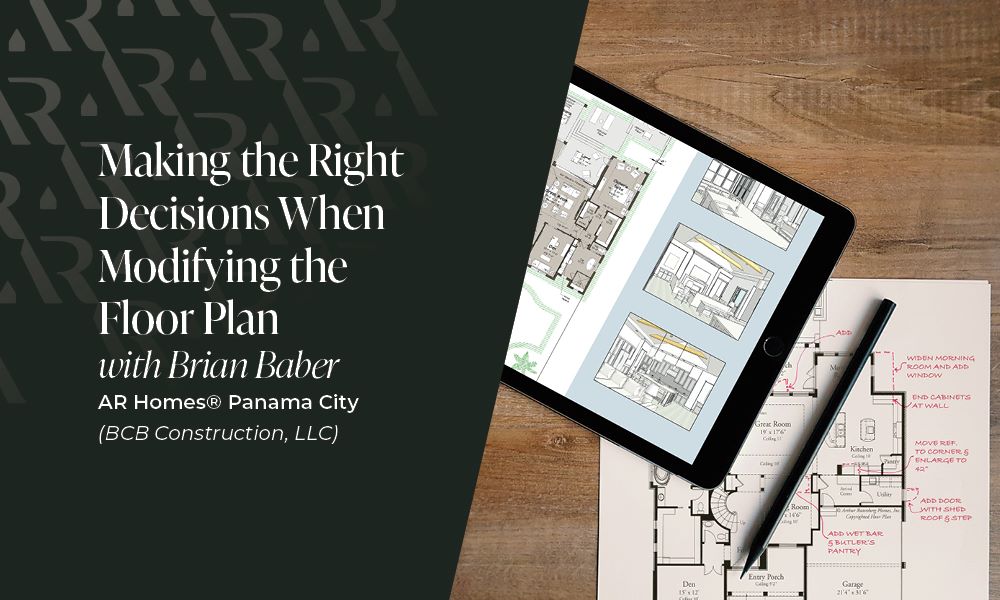Making the Right Decisions When Modifying the Floor Plan

Making the Right Decisions When Modifying the Floor Plan
When it comes to building a custom home, one of the most exciting aspects is the ability to customize the floor plan to your specific needs and preferences. Whether you want to add more space to accommodate a growing family or create an open-concept layout for better flow, modifying the floor plan requires careful consideration. Making the right decisions during this process can significantly impact the functionality, aesthetics, and long-term satisfaction with your home.
Here are some steps to take when modifying your custom home’s floor plan:
- Identify Your Goals and Priorities:
Before diving into any floor plan modifications, it’s essential to identify your goals and priorities. Consider your lifestyle, family size, and specific requirements. Are you looking for more bedrooms, an open kitchen, or a dedicated home office space? By establishing clear objectives, you can make informed decisions that align with your needs.
- Work with an Experienced Designer:
Collaborating with an experienced designer is crucial when modifying your floor plan. They have the expertise to understand structural limitations, building codes, and design principles. A professional can help you translate your ideas into a functional and aesthetically pleasing floor plan while ensuring that all modifications are feasible and compliant with local regulations.
- Assess Existing Structural Elements:
When modifying the floor plan, it’s important to assess the existing structural elements of your home. Determine which walls are load bearing and can’t be removed without additional support. Understanding the structural implications of your desired modifications will help you avoid costly mistakes and ensure the safety and integrity of the building.
- Consider Traffic Flow and Functionality:
Traffic flow and functionality are crucial aspects to consider when modifying the floor plan. Evaluate how people will move through the space and ensure that there are no obstructions or awkward bottlenecks. Consider how the layout will impact everyday activities and how different areas will interact with one another. A well-designed floor plan promotes convenience and enhances the overall livability of your home.
- Maximize Natural Light and Views:
Take advantage of the beautiful surroundings in Panama City, FL, by maximizing natural light and capturing scenic views. Consider incorporating large windows, skylights, or glass doors to bring in ample daylight. Position living areas and frequently used rooms to make the most of attractive outdoor vistas. A well-designed floor plan that embraces natural light and beautiful views can create a sense of openness and connection to the outdoors.
- Futureproofing and Resale Value:
While it’s important to design a floor plan that meets your immediate needs, it’s also wise to consider future-proofing and potential resale value. Think about how your lifestyle might change over the years and whether the modifications you make will still be relevant. Aim for a design that offers flexibility and adaptability. Additionally, consider the impact of your floor plan modifications on the overall value of your home, as certain layouts and features can enhance market appeal.
Modifying the floor plan of your custom home is an exciting opportunity to create a space that perfectly suits your lifestyle and preferences. By identifying your goals, working with professionals, evaluating structural elements, considering traffic flow, maximizing natural light, and planning for the future, you can make informed decisions and ensure a successful outcome. Remember, careful thought and consideration during the modification process will result in a functional, aesthetically pleasing, and highly satisfying living space for years to come.